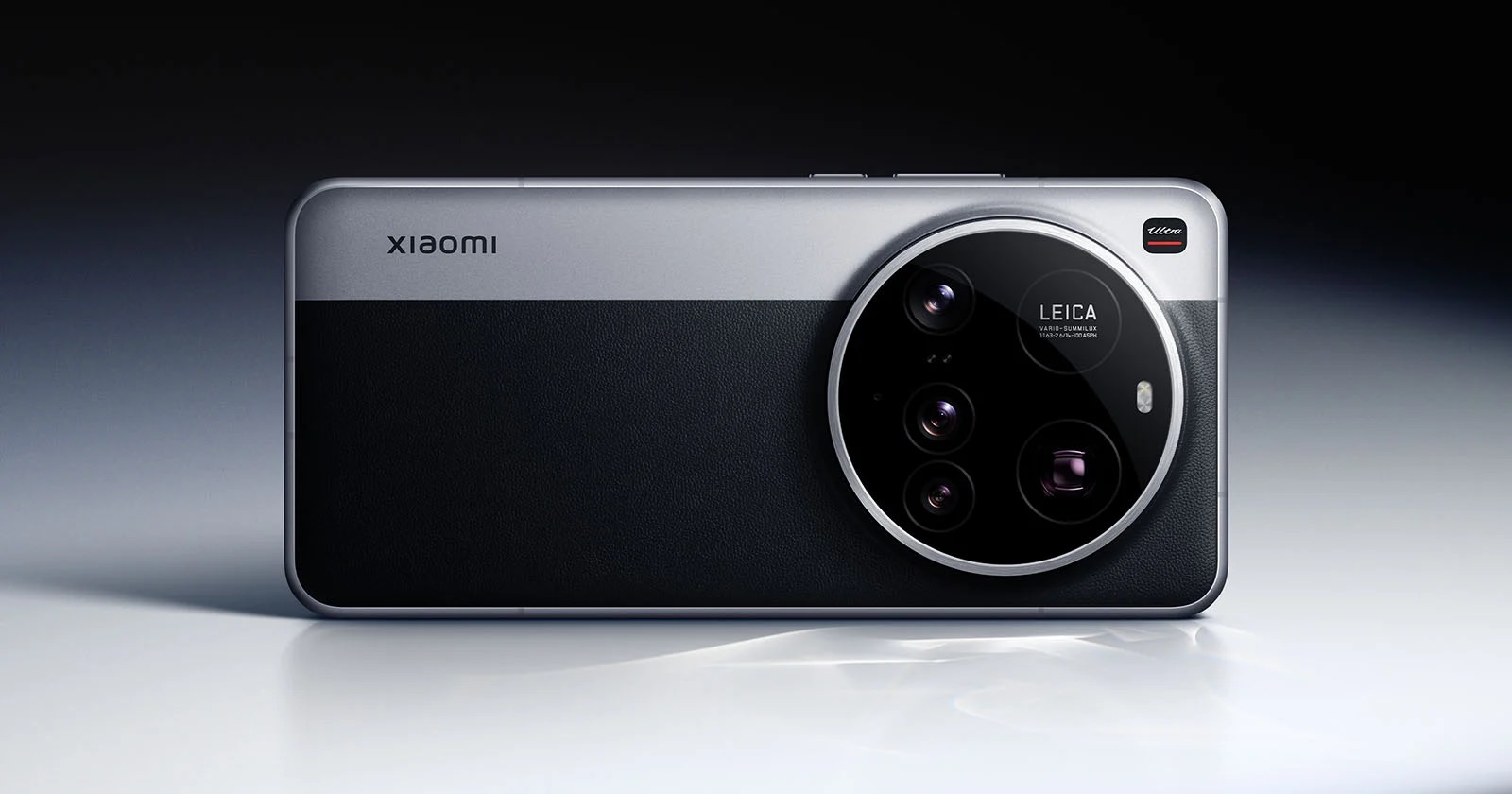Xiaomi Announces Its 15 Series Smartphones
Xiaomi announced its 15 Series smartphones, the Xiaomi 15 and 15 Ultra, on the eve of Mobile World Congress in Barcelona, touting them as the ultimate professional imagery premium mobile photography and video devices.
Starting with the 15 Ultra, the 50-megapixel Type 1 LYT-900 sensor is carried over from the previous model, along with a Summilux lens with the same f/1.63 aperture and 14EV dynamic range. Xiaomi claims the camera can capture twice as much light as its predecessor for improved low-light performance. It also supports 23mm, 28mm, and 35mm comparable focal lengths, however the last two are crop factors.
Notably absent is the variable aperture from the 14 Ultra, which provided f/4 as an option to the original f/1.63 stop.
The 50-megapixel main telephoto is a 70mm equivalent with 3x optical zoom and is accompanied by a 200-megapixel periscope telephoto (100mm equivalent) with 4.3x optical zoom. Xiaomi also praises the telephoto’s light-gathering capability, claiming a 136% improvement despite a tighter f/2.6 aperture. Hybrid zooms can extend the lens to 200mm, 400mm, and beyond, with varied degrees of success, as I will discuss in my upcoming review.
The telephoto lens also functions as a macro camera, allowing for close-ups of up to 10cm. The 50-megapixel (14mm equivalent) ultra-wide camera has a somewhat narrower 115-degree field of view. The company employs a 24-layer ultra-low reflection glass with a unique coating for the camera module to reduce reflections to the greatest extent possible. Because it includes the entire back array, it applies to all cameras.
In terms of video, Xiaomi supports Dolby Vision on all rear cameras and has added support for 4K at 120fps. All four cameras support 10-bit log recording, as well as optical image stabilization (OIS) and electronic image stabilization (EIS) for smoother filming.
The 15 Ultra is available in three colors: black, white, and silver chrome. The latter jumps out the most because the silver strip running down one side makes the phone look like a throwback point-and-shoot when turned in landscape mode. Xiaomi boasts that this is the most durable phone company has ever manufactured, with IP68 dust and water resistance and improved drop resistance thanks to Xiaomi Shield Glass 2.0 and Gorilla Glass 7i.
The Xiaomi 15 may not receive as much attention as its Ultra sibling because it is smaller (and less expensive). The Summilux lenses have a similar anti-reflective coating. On the video side, the back array supports Dolby Vision and 4K at 60fps. For stills, the focal lengths remain unchanged, with the exception of a periscope telephoto and a wider 60mm equivalent for the conventional telephoto lens.
Cropped settings are available on the main and telephoto cameras to expand the focal range. This also applies to the dual Portrait mode, which combines Leica’s and Xiaomi’s more complex Master Portrait. The company is introducing a “Sunset Portrait” to get dazzling outcomes during golden hour by optimizing bokeh and skin tone. All HyperAI features, as well as Gemini integrations, apply here in the same way, thus the standard 15 are not excluded.
It comes in black, white, and green, with a new liquid silver coming out later in 2025.
Xiaomi is releasing a new photography kit for the 15 Ultra that is more attractive and modular than previous ones. It contains a built-in 2000mAh battery that may restore around one-third of the phone’s battery life for extended photography sessions. It also includes an adapter for 67mm filters. The zoom lever, exposure slider, and video recording button are also returned.
The Xiaomi 15 costs 999 euros, while the 15 Ultra costs 1,499 euros. Xiaomi also stated that it will provide one free out-of-warranty repair and one screen replacement during the first 12 months of purchasing either phone.


